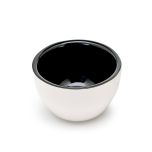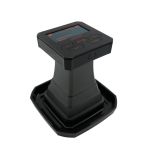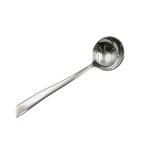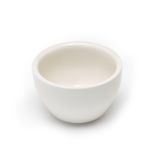


In the world of specialty coffee, there is nothing more important than the flavour profile of a cup of coffee. For baristas, this flavour can be manipulated and changed during the brewing process – by adjusting flow rate, method, recipe, etc. – but for roasters, the focus is purely on the profile of the roast. An important step for roasters as they develop their roast profile for each bean is to analyse the colour of the beans at different stages during the roasting process to ensure consistency and quality control. So, what can they use to do this?
Introducing the CM-100 Plus Black Edition, the latest Coffee Roast Colour Analyser from Lighttells. This device helps roasters (and baristas) to gain a better understanding of their roast profile by analysing the roasting degree between the roasted whole beans and roasted ground beans. It is extremely easy to use, portable and lightweight, gives a consistent reading, and has a long battery life. With the CM-100 Plus, users can easily measure and record data specific to each roast, and ensure consistency across their roast profiles.
HOW DOES IT WORK?
Like other coffee roast analysers on the market, the CM-100 Plus uses an infrared photometer which reveals the caramelisation of the coffee beans or coffee grounds. The analyser shoots a laser beam down onto the surface of the beans (either whole or ground), and measures how much light reflects off the surface of the coffee and back into the analyser. If the roast is darker, the bean will absorb more light, and reflect less light back into the analyser. If the roast is lighter, less light will be absorbed and more light is reflected back. This data is then shown on the display and stored on the device with the date, roast type, score, and SCAA scale results. The CM-100 Plus has the capacity to store up to 200 results to help track and monitor roasting profiles.
WHOLE BEAN vs. GROUND BEAN
One of the main purposes of the CM-100 Plus is to measure the consistency of the roast and to make sure that the beans are roasted evenly from the outside to the inside. The first step in this analysis of colour is to measure a sample of the batch using whole beans. This analyses the light that reflects off the outside of the bean. The second step is to then measure the inside of the bean, which is done by analysing the roasted beans after they have been ground. Measuring both the inside and the outside of the bean gives the user an accurate reading of the roast as a whole rather than just observing the outside of the bean, which could be dark on the outside, but underdeveloped on the inside. This difference between the outside recording and the inside recording is called the ‘spread’, or the measuring range.




MEASURING RANGE
The measuring range on the CM-100 Plus goes from 5-130, with 5 representing a very dark roast and 130 representing a very light roast. If the spread between the whole bean reading and the ground bean reading is large (e.g. if you had a reading of 50 for the whole bean and 80 for the ground bean), it means that your roast could be underdeveloped, with a much darker outer surface than the inner core of the bean. With this information from the CM-100 Plus colour analyser, roasters can then adjust their roasting variables (time, temperature, airflow, etc.) to dial-in a more even and consistent roast profile.
HOW DO I USE IT?
The process is pretty simple:
- Make sure your beans are cool before using this tool (heat can bend the light that reflects off the beans, and can affect the refractometer reading).
- Press the Power Button and wait for about a minute for it to ‘warm up’.
- Once it is ready, the display will show the different modes: Measure, History, Calibration, and Setup.
- Remove the tower from the tray and fill the inner tray completely with beans, making sure they are as flat and even as possible in the tray. (For ground beans, the finer the grind, the more accurate the reading will be. And always make sure that your grind size is consistent: if you grind your coffee on an espresso setting one day for a batch, make sure that you’re using that same grind setting the next day.)
- Replace the tower over the tray and the beans.
- Select the ENTER key and select either WHOLE BEAN or GROUND for the type of coffee you are measuring.
- The results will be shown on the display screen, showing a score, a roast type, the date, and the SCAA scale results.
- Back on the home screen, you can use the UP and DOWN arrows to select the different modes. By selecting HISTORY, users can see the previous 200 results which have been stored on the device. After measuring, users can calibrate the device using the calibration weight included in the box.
To see the entire Lighttells range, please click here. If you have a question or would like to get in contact with our team, you can send us a message using the chat module in the bottom left hand side of your screen. Alternatively, you can send us an email to [email protected] or give us a call on 1300 724 249.











